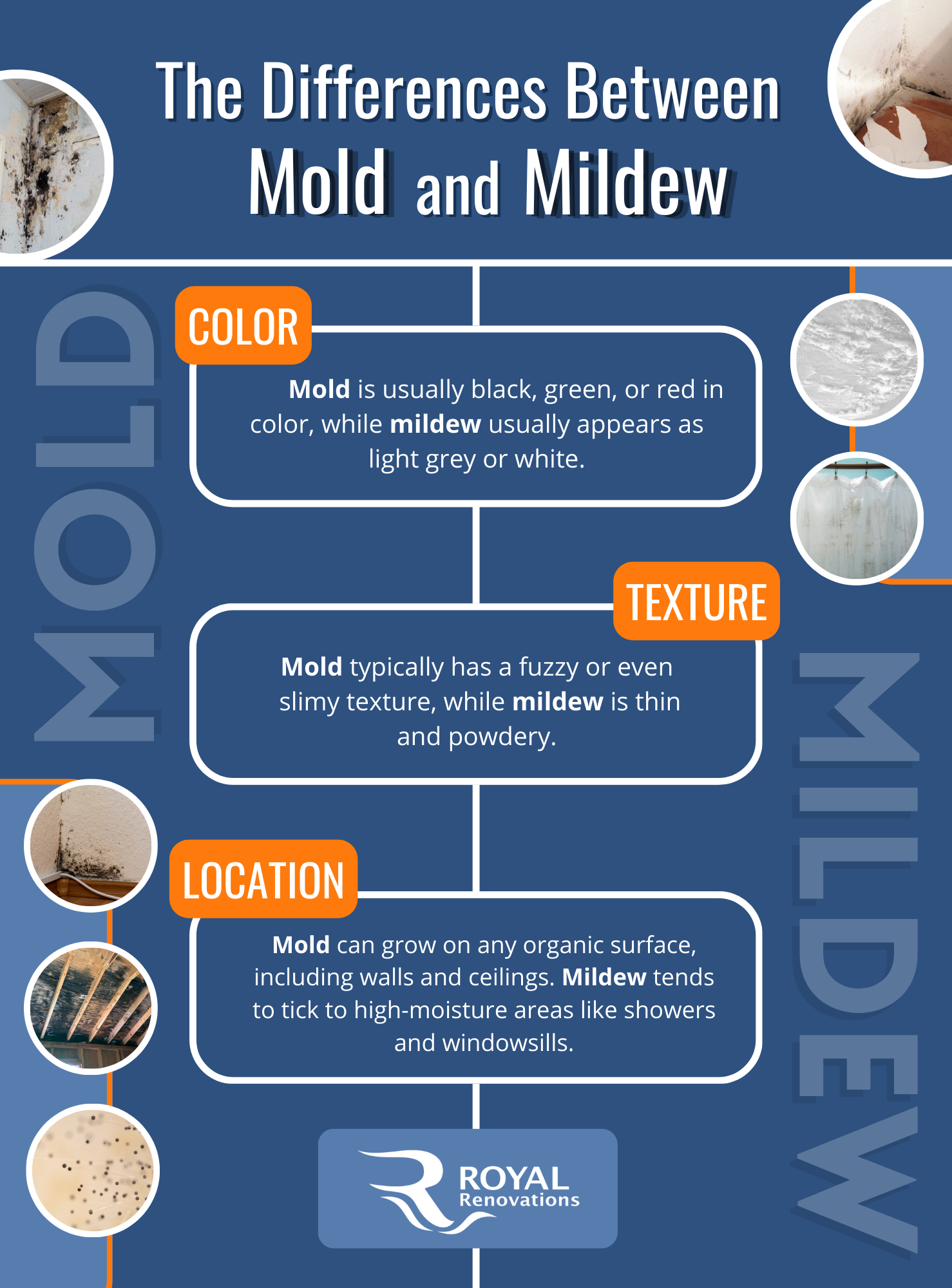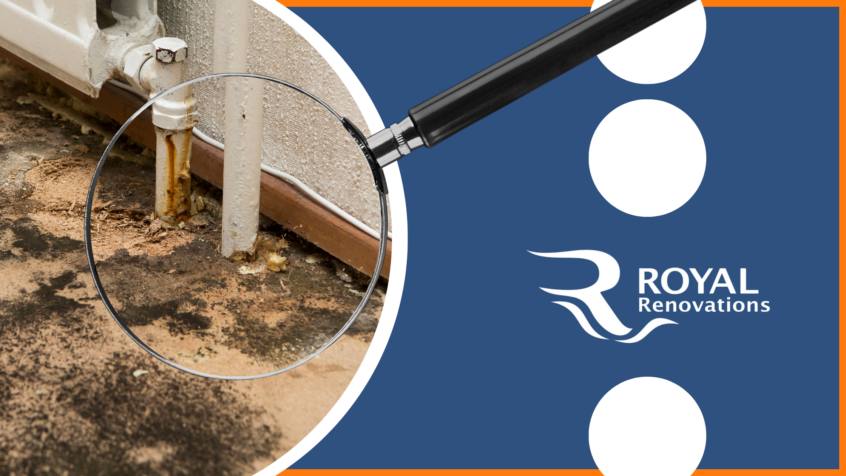The terms “mold” and “mildew” are often used interchangeably, but they actually describe two different problems. Both mold and mildew are types of fungus, but they differ in appearance, growth pattern, habitat, and potential health risks. Both types of fungus require different removal methods, so understanding the differences between them is a vital skill for any homeowner.
Why You Should Care About Spots and Spores
Mold and mildew might seem like harmless little spots, but they can cause significant problems if left unchecked. Mold and mildew can cause structural damage to your home or business as they eat away at surfaces, and both growths pose health risks and can exacerbate respiratory issues, especially in those with underlying condition like asthma.
Because fungus grows so quickly, it can be challenging to remove it on your own once it’s started to spread. If you notice any signs of mold growth, contact a trusted mold remediation company like Royal Renovations, especially if the infestation affects more than 10 square feet of your property.
Spot the Difference: Mold Vs. Mildew
In addition to the compositional differences between mold and mildew, there are several visual and tactile characteristics that can be used to distinguish them, including texture, color, and location.

Color
Mildew typically appears as a patch of gray or white fungus on the surface of a moist area, while mold can range from black to green and may even appear slimy in nature—especially when found on food.
Texture
Mildew tends to have a powdery texture, making it easier to scrub away with a brush and store-bought mold cleaner.
In contrast, mold may have a slimy or fuzzy texture, particularly when it has spread extensively. This slimy texture can make mold difficult to clean without the help of a professional mold cleanup and remediation service.
Growth Pattern
Typically, mildew first appears as small, black dots which then grow outward from the center. The resulting circles may eventually overlap one another, but mildew will usually stay within the confines of the surface it’s growing on.
Mold takes on a more chaotic growth pattern and will quickly spread from the infected surface onto nearby walls and structures.
Location
Mildew requires large amounts of moisture to sustain itself, so it is commonly found on surfaces that are often or always damp, including shower walls, grout, sinks, and bathroom walls.
Mold also requires moisture, but not as much as mildew. Mold can survive on any organic surface, including wallpaper, ceilings, windowsills, kitchen walls, and even air vents. Because mold has a slimy consistency, it can fill in cracks and crevices in the surface it lives on, making it difficult or even impossible to fully remove.
Smell
Mold and mildew each have their own distinct smell. Typically, mildew has a damp, musty smell that, while unpleasant, is usually bearable. Mold, on the other hand, has an intense, earthy smell that can be strong enough to cause a physical reaction, especially if the mold has spread throughout a room.
Remove Mold and Mildew with Help from Royal Renovations
By recognizing the visual characteristics and understanding the conditions that promote their growth, you can take proactive steps to address mold and mildew.
When mold and mildew do get out of hand, however, it’s best to leave their removal to the experts. The pros at Royal Renovations have years of experience in mold removal and get the job done right the first time.

